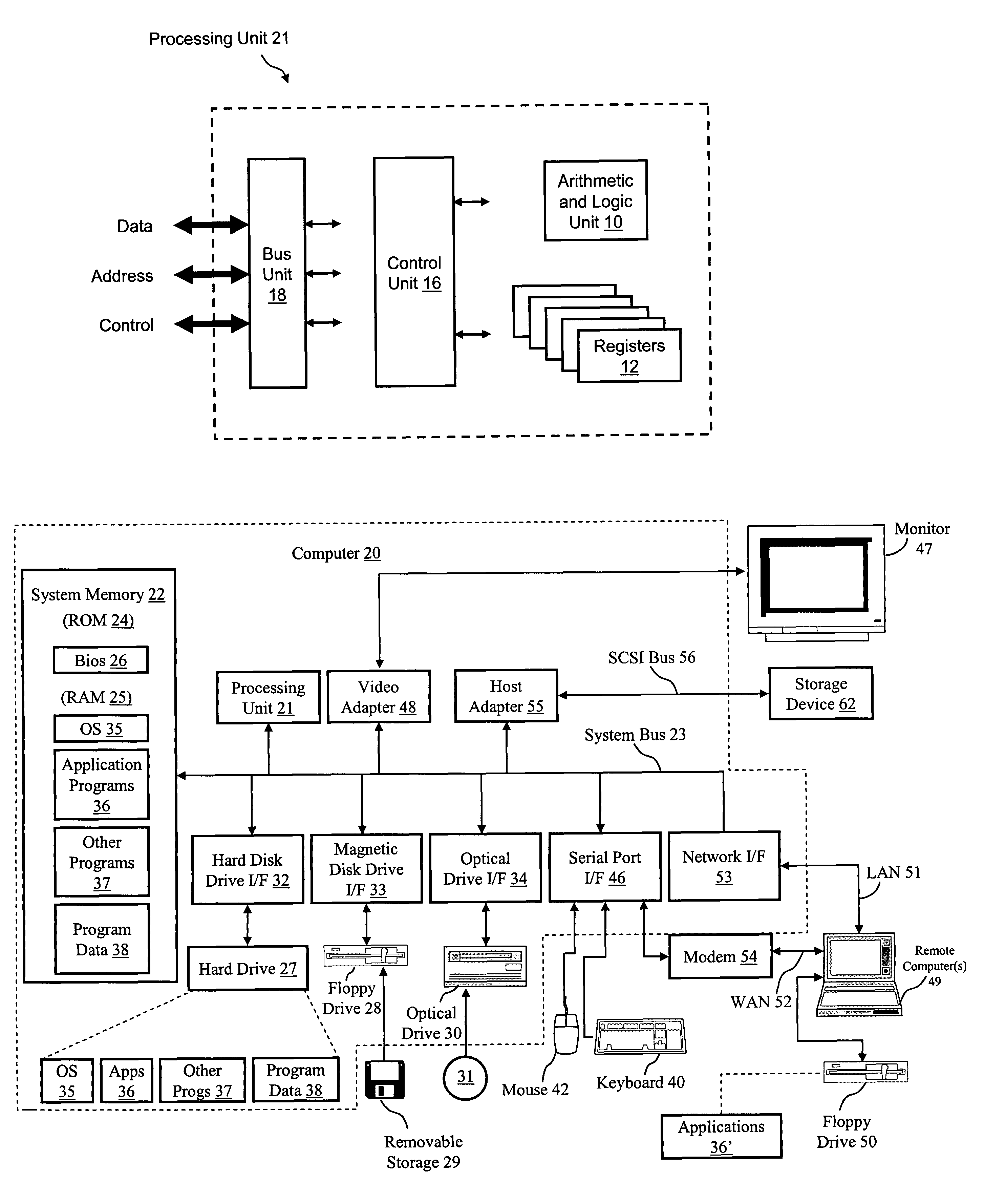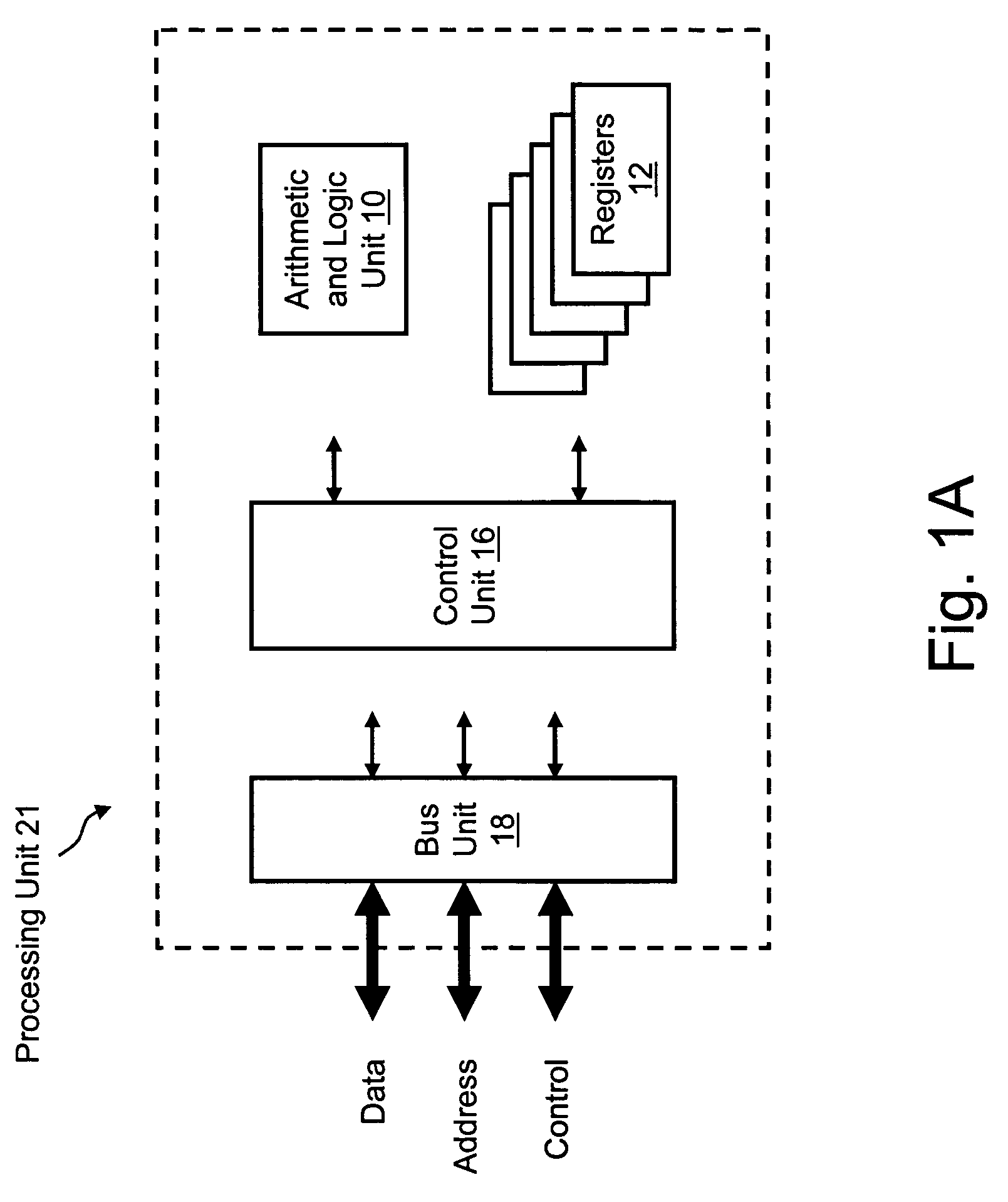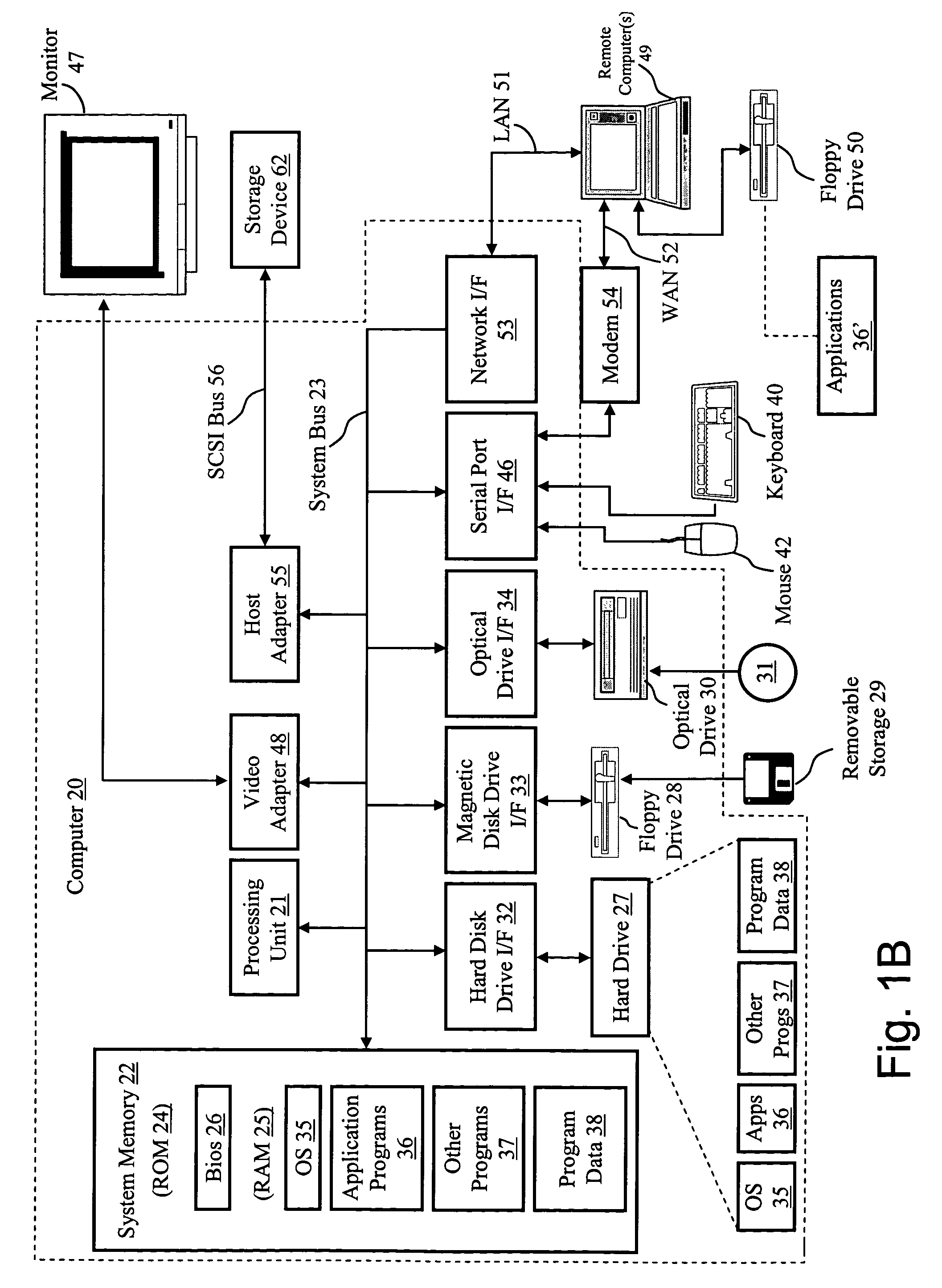Systems and methods for instruction sequence compounding in a virtual machine environment
a virtual machine environment and instruction sequence technology, applied in the direction of multi-programming arrangements, electric/magnetic computing, instruments, etc., can solve the problems of incompatibility among the other elements of the hardware architecture of the computer system, inability to handle exceptions and context switching, and generally many clock cycles to execute, so as to reduce the number of individual traps, improve performance and efficiency, the effect of reducing the number of processor cycles
- Summary
- Abstract
- Description
- Claims
- Application Information
AI Technical Summary
Benefits of technology
Problems solved by technology
Method used
Image
Examples
first embodiment
[0042]The use of VMM 104′ and trap handler 122 of the virtualized computing system of FIG. 4 provides a method of reducing the overhead associated with exception handling. This is accomplished by the user's programming VMM 104′ to detect sequences of code in which the guest OS, such as guest OS A 112, may have executed a number of privileged-level instructions near each other. These sequences are analyzed to determine whether a certain series of instructions can be handled as a whole by VMM 104′, for example, by replacing multiple privileged-level instructions, which cause traps, with other code that handles the series of instructions as a group, i.e., instruction compounding. In this way, the performance of the virtualized computing system of FIG. 4 is optimized according to the invention.
[0043]As an example, a sequence of instructions that uses one or more CLI, OUT, MOV or STI instructions based on the x86-architecture is provided, i.e., CLI=clear interrupt flag (disable interrupt...
example instruction
Sequence #1 Running in Guest OS A 112
[0044]CLI—clear interrupt flag (disable interrupts);[0045]OUT 21,AL—output the data contained in register AL to port 21;[0046]MOV AL,AH—move the value in register AH into register AL;[0047]OUT A1,AL—output the data contained in register AL to port A1; and[0048]STI—set interrupt flag (enable interrupts).
[0049]In this example instruction sequence running in a VM environment, four of the five instructions cause an exception to occur. More specifically, the CLI instruction, the two OUT instructions, and the STI instruction cause a trap that is handled by trap handler 122 of VMM 104′. Table 1 illustrates a comparison of estimated total processor cycles that are used when instruction sequence #1 is run 1) on physical hardware, 2) in a non-optimized VM environment, and 3) in the optimized VM environment of the present invention.
[0050]
TABLE 1Comparison of estimated total processor cyclesProcessor cycle countPhysical Hard-VM environmentVM environmentware ...
second embodiment
[0072]For example, in the example instruction sequence of CLI, OUT, MOV, OUT, STI the CLI and STI instructions are replaced with VMCLI and VMSTI synthetic instructions, respectively, and, thus, eliminate the trap on the CLI and STI instructions. (The synthetic instructions allow a branch to other code that never causes a trap.) Then the two OUT instructions are replaced with one OUT instruction, as described in the first and second embodiment of this invention.
Conclusion
[0073]The various systems, methods, and techniques described herein may be implemented with hardware or software or, where appropriate, with a combination of both. Thus, the methods and apparatus of the present invention, or certain aspects or portions thereof, may take the form of program code (i.e., instructions) embodied in tangible media, such as floppy diskettes, CD-ROMs, hard drives, or any other machine-readable storage medium, wherein, when the program code is loaded into and executed by a machine, such as a ...
PUM
 Login to View More
Login to View More Abstract
Description
Claims
Application Information
 Login to View More
Login to View More - R&D
- Intellectual Property
- Life Sciences
- Materials
- Tech Scout
- Unparalleled Data Quality
- Higher Quality Content
- 60% Fewer Hallucinations
Browse by: Latest US Patents, China's latest patents, Technical Efficacy Thesaurus, Application Domain, Technology Topic, Popular Technical Reports.
© 2025 PatSnap. All rights reserved.Legal|Privacy policy|Modern Slavery Act Transparency Statement|Sitemap|About US| Contact US: help@patsnap.com



